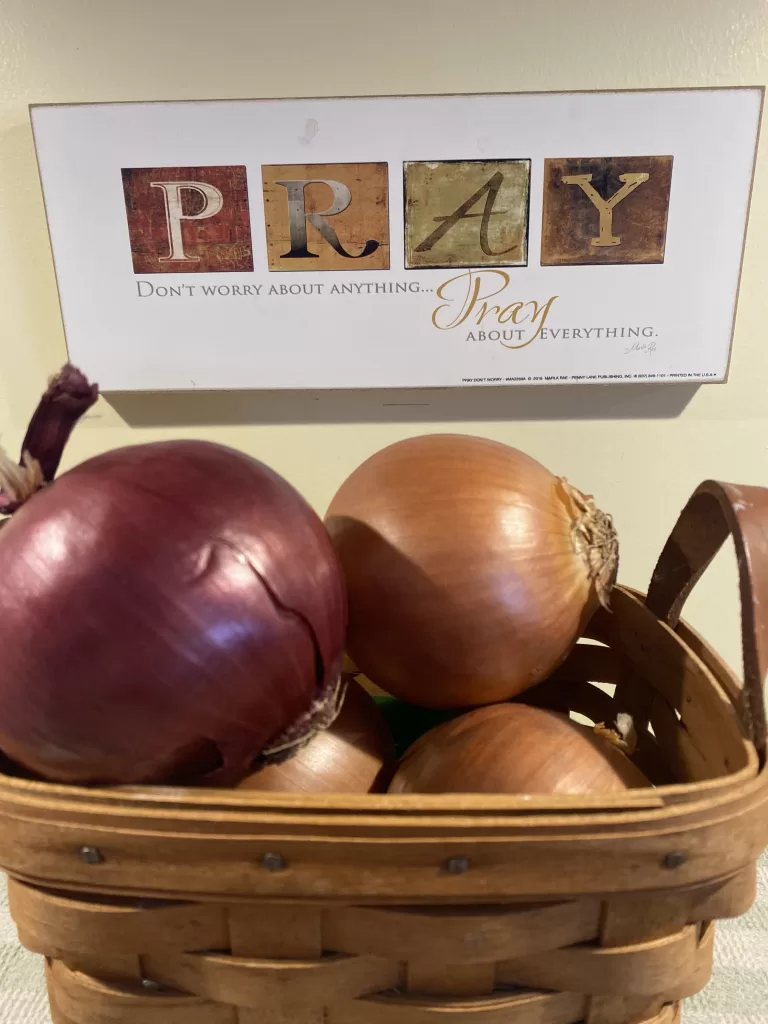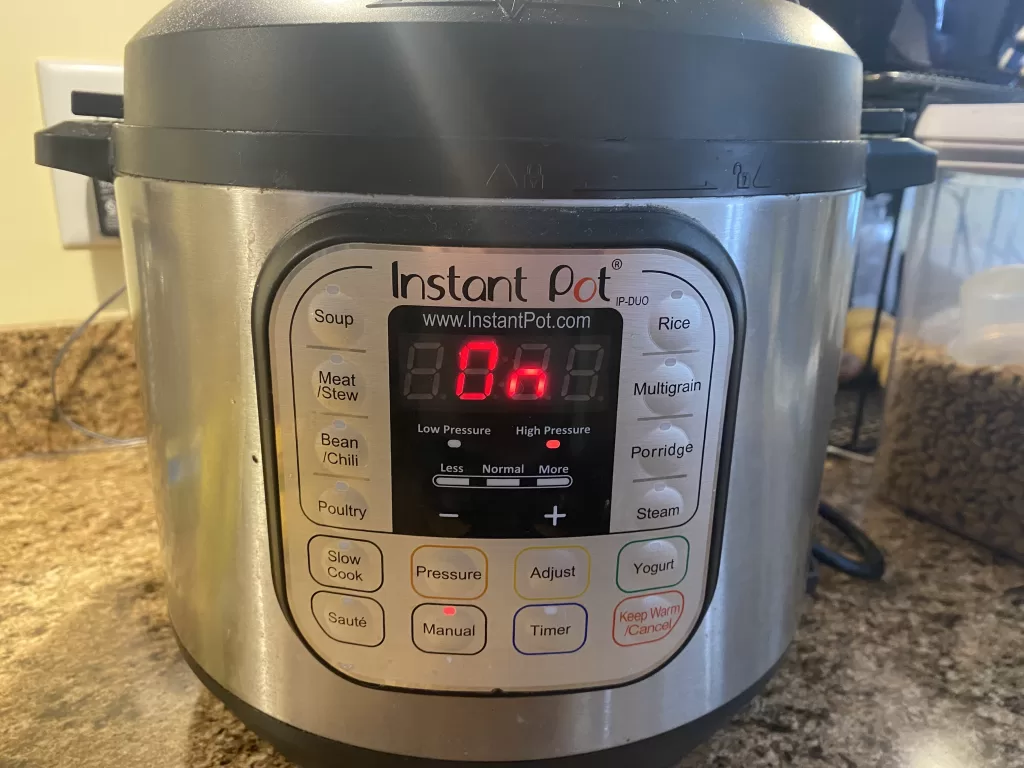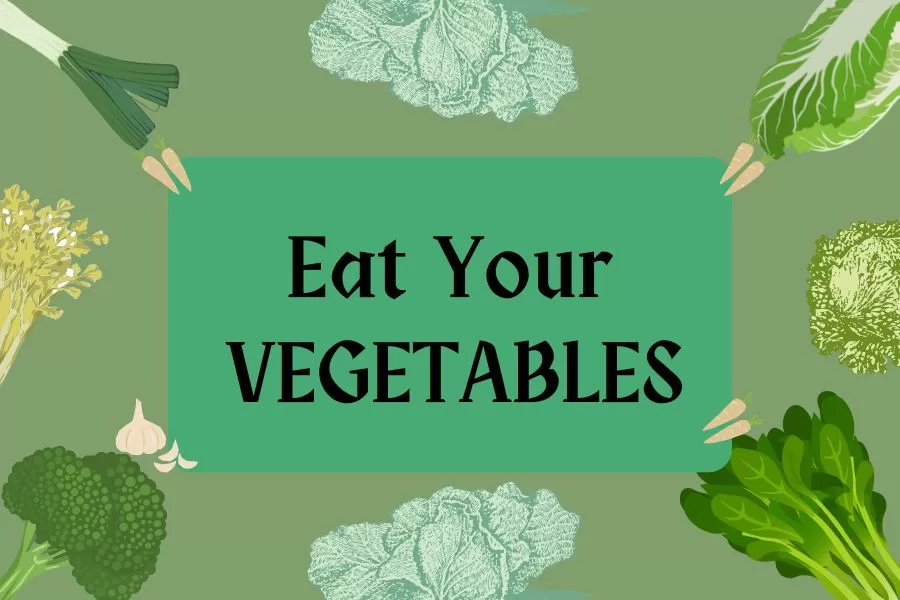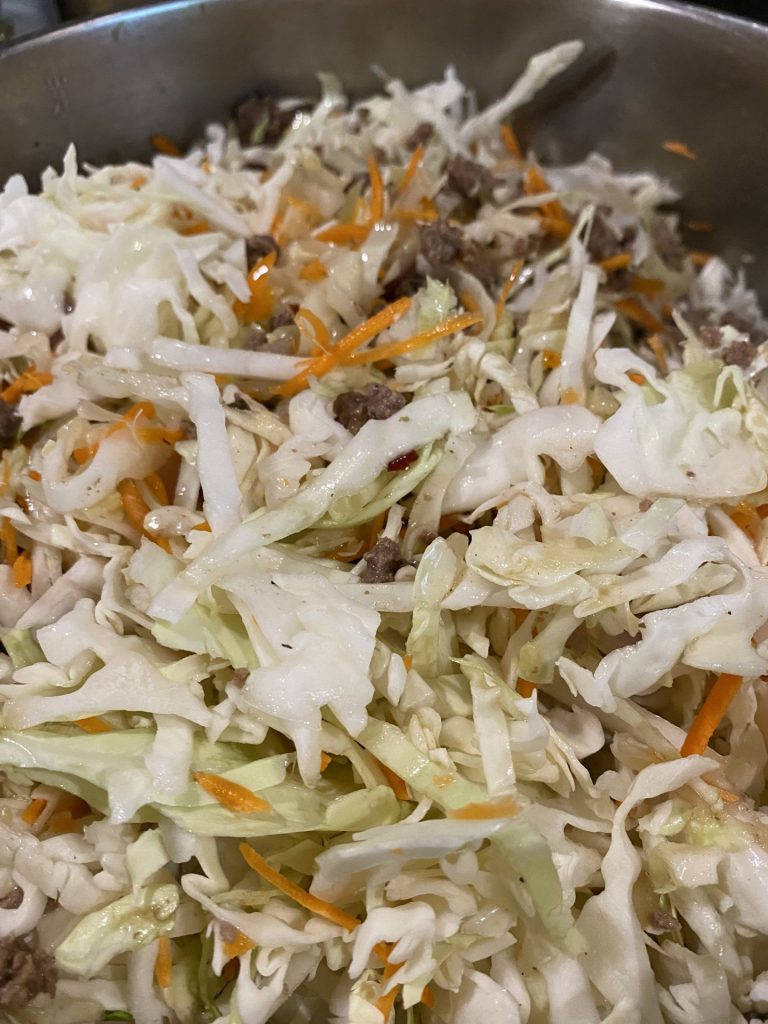Eat Your Vegetables!
This post may contain affiliate links. View our disclosure policy here.
Eat your vegetables. It’s more important than you imagine.
The amount of processed foods many Americans eat in a day, let alone a whole week continues to baffle me.
I cook with vegetables daily. Raw vegetables are a fairly common snack. I guess the over 15 years it’s been that my family knocked out artificial ingredients, eliminating most processed foods, and the daily habit of cooking mostly from scratch makes me forget how easy it is to overlook vegetables with a standard American Diet.
Yet, even when we did eat that way, sides of vegetables and salads were still part of our family meals. It still somehow surprise me to hear of people that don’t eat their vegetables. You see, a lot of the ailments and chronic disease has much attribution to the Standard American Diet. It’s “SAD” that many Americans are still unaware of this. Or they ignore it. It’s really important. Eat Your Vegetables!
Let’s discuss the importance and the why of this today. And let’s touch upon what vegetables are extra important- especially if you don’t eat a huge variety already. Additionally, I’ll give you a few suggestions on how to get started in case you or your children are part of that number of people who just aren’t sure how to add or learn how to like their vegetables. Let’s add some vegetables to your wellness basket!

Why is it Important to Eat Vegetables?
A diet rich in varied vegetables can have a huge impact on your overall health and wellness. Vegetables are important because of the enormous amount of antioxidants, vitamins, minerals, phytochemicals and fiber they offer to our bodies. The antioxidants in vegetables help protect the body against oxidative stress caused by free radicals. Oxidative stress is a major contributor to chronic diseases such as cancer, heart disease, and neurodegenerative diseases. Many vegetables contain anti-inflammatory compounds that help reduce inflammation in the body. Chronic inflammation is also a key driver of many chronic diseases. Additionally, vegetables are rich in compounds that support liver detoxification, which is essential for removing toxins from the body.
How Many Servings Should I Eat?
The recommended amount of vegetables to consume in a balanced diet may vary depending on various factors such as age, sex, and physical activity level. However, while a general guideline for the recommended daily intake of vegetables is 2-3 cups of vegetables per day for an adult, this amount is actually still very low for optimal health. We really should be aiming to 2-3 serving per meal and including them in our snacks. You can read a little bit more about this amount in Mark Hyman’s food pyramid at this site! In general, Dr. Hyman says vegetables should take up about 75% of the space on your plate.
Variety is just as important as quantity. Eat the colors of the rainbow. The colors can often indicate something about the nutrients inside. The more colored variety you have, the bigger the variety of nutrients.
What Vegetables Should Be Eaten Everyday?
As I stated above, variety is best. Read up on vegetables and their nutrients. Nutrient dense is important to include daily, but change these up and always be sure you have several colors on your plate. I try to make sure I get some leafy greens, cruciferous vegetables and at least a few other vegetables in each day.
What are the 10 Best Vegetables to Include In Your Diet?
Eating a variety of vegetables is really the best thing. Think of it as trying to get all the colors of the rainbow into your weekly plan, and as many in a day as possible. Still, there are some vegetables that are known to be more nutrient-dense and good to get in on a daily basis.
Leafy Greens
The truth is our leafy greens such as spinach, kale, beet greens, and collard greens are just packed full of vitamins, minerals, and antioxidants. Another plant that is green some don’t think of are nettles. They are not necessarily vegetables, but they are greens and leafy! Nettles are a powerhouse of nutrients. I haven’t worked with fresh nettles yet, but I hope to this summer. I do work with dried nettles though, throwing a handful into meatloaf, soups, stir-fry’s, and really anything I think to add them to. I sometimes make a tea with nettles but I’m not a fan of the earthy taste so I do blend them with a ton of other sweeter tastings herbs.
Cruciferous Vegetables
Cruciferous vegetables such as broccoli, cauliflower, Brussels sprouts. Bok choy and cabbage are high in fiber and phytonutrients that may help reduce the risk of chronic diseases.
Sea Vegetables
I know this isn’t one that probably popped into your head but they are really so nutritious! And the thing is, if they are not a favorite of yours, you can pop just a pinch into broths, soups, or stir-fry recipes and not even notice them there while still benefiting from the nutrients. There’s a variety of them and they all have various flavors: Nori, Kelp, Kombu, Wakame, and Dulse are the ones I see the most. Some of them I can find at my local grocery stores. Others I buy at Mountain Rose Herbs or on Amazon. You can find these ones here!
Kelp Granules are easy to add to soups and other dishes!
Nori Sheets are what you want to make your own sushi!
These seaweed sheets make awesome snacks!
Asparagus
Asparagus is one of the few food sources of glutathione, an important antioxidant which helps the body maintain energy, reduce muscle pain, improves sleep quality and boosts immune function. Low levels of glutathione is associated with a number of chronic disease. In addition to glutathione, asparagus is rich in folate, vitamin K, selenium, and B vitamins.

Garlic and Onions
Here’s an easy one to just add to the vegetable dishes you already love. Both of these vegetables are super powerful immune boosting foods. They are great support for liver health and a great source of B vitamins, manganese, calcium and much more. Read more about onions in this post!
Carrots
Bugs Bunny isn’t the only one that should eating his carrots. You should too! Carrots are best known for their vitamin A (in the form of beta carotene)and carotenoids which support healthy eyes. They are also fabulous sources for vitamins K, B6, biotin ,potassium and are a good source of fiber. Carrots can actually be found in many colors too, not just the orange you may have pictured in your head.
Beets
I’m considering adding beets to my garden this year if I could figure out a good spot for them. I’m wondering if they could do decent in containers? I’ll have to look that up. Or maybe my raised bed.
Also called beetroots, beets are a pretty versatile vegetable. They are highly nutritious. Beets are a great source of folate (B-9), which is important in red blood cell formation as well as healthy cell growth and function. In addition they are a source of fiber, manganese, copper, potassium, magnesium, Vitamin C and iron. I like adding beets to salads and of course, pickled eggs and beets are a favorite dish here.
Sweet Potatoes
Yes, here’s another orange vegetable. The sweet flavor these potatoes offer make them one of my favorites, especially during a Whole30 and I attempt to face my sugar addiction. They are a wonderful side dish when baked and a great addition to roasted vegetables and soups. Sweet potatoes, like carrots, are high in vitamin A and carotenoids. Diets with foods containing antioxidants such as carotenoids are said to be associated with a lower risk of some types of cancer. Sweet potatoes are also a good source for vitamin c, potassium, manganese, vitamins B6 and B5, and Vitamin E.
Bell Peppers
Did you know that bell peppers are technically fruits? Sometimes studying fruits and vegetables gets darn confusing. Regardless, most consider them vegetables and they are usually paired with vegetables so here they are!
Bell peppers are one vegetable that I know I can cut up, put in front of my teenage son, and they will for sure disappear quickly! That’s great because their nutritional value is high. They are very high in vitamin C (read more here). Bell peppers also contain vitamins B6, K, E, A Potassium, and Folate. Bell peppers have a number of antioxidants too including capsanthin, violaxanthin, and quercetin. Green bell peppers contain lutein, important for eye health.
Green Beans
Green beans are sometimes called snap beans or string beans. This is a pretty popular vegetable and it’s pretty nutritious too. Green beans contain vitamins and minerals including vitamins C, A, K, calcium, iron, magnesium, manganese, potassium and a small amount of zinc. Try not to overcook your green beans as the closest they are to their ‘raw’ texture, the more nutrients they retain.
Bonus: Mushrooms
Even though they are technically a ‘fungus’, most people consider these vegetables in their cooking so I threw them in here as a bonus. There’s a huge assortment of mushrooms and they all have various health benefits. In general, mushrooms contain protein, fiber, vitamins and minerals. These include selenium, vitamin B6, zinc, potassium, riboflavin and niacin. Mushrooms are said to boost your immune system, protects brain health, improves gut health and may assist with heart health. They are so easy to add to a vegetable side dish, casserole or meatloaf.
Can I Just Eat Vegetables Everyday?
While a healthy vegetarian diet keeps you away from processed foods and sugars and does provide many nutrients, it does not offer you every nutrient necessary for optimal health. Vegetables do not contain sufficient amounts of certain nutrients, including B12 and Vitamin D. Omega-3 fats, and amino acids. Some nutrients such as iron and zinc, while in vegetables, are not as easily absorbed by the body as they are from animal sources. These are just a few of the things to consider when debating a vegetarian diet. Vegetables are definitely important, and should take up more of your plate than other food groups, but, in my opinion, should not be the only food group.
How Can I Add Vegetables to My Diet?
It’s hard to start adding a bunch of vegetables to your diet if you grew up not eating them or not even liking them. As I say with everything, imperfect progress is still progress. The important thing is to START and work on it one step at a time. Here’s some tips to get started:
Add More to Your Plate
Simply add a little more of the vegetables you already eat to your plate and lessen the amount of starchy or processed sides. This simple act of adding more of the vegetables you already like will make the transition of eating more vegetables easier.
Keep Fresh Vegetables Handy
Buy some fresh vegetables and cut up some ahead of time to snack on during the day. My favorite veggies to snack on are carrots, cucumbers, colorful bell peppers, zucchini, and Learn How to Cook
Experiment with Different Ways to Cook Vegetables
Learn how to cook vegetables properly. Sometimes the reasons we don’t like a particular vegetable is because we haven’t had them served to us in a delicious manner. I found this fantastic source on cooking vegetables by Dr. Mark Hyman. I think you will find it useful! You can sauté, roast, steam or prepare vegetables in many ways.
Make a New Meal
Sometimes getting out of our comfort zone with vegetables means adding new recipes to our collection. Find a new stir-fry recipe or a soup that calls for a new vegetable. You can ask friends for favorites or try these out:
Venison Stuffed Peppers (you can substitute ground beef if you don’t have venison)
Pumpkin Chili Soup may be a great way to get in a few vegetables that aren’t always in your meal plan.

Do you just want a simple side vegetable? Check out these instructions for a side vegetable done in the Instant Pot! I really love my Instant Pot! It can make things so simple and with a little experimentation, you can get things just right! Perfectly steamed to your taste.
This is an awesome cookbook. While I’m not a vegetarian or vegan, watching this lady’s cooking show and her cookbooks did get me to be more adventurous with vegetables and she has some really tasty dishes.
Don’t Be Afraid of the Less Popular Vegetables
Just because you’ve never had it, doesn’t mean it’s bad. Be willing to try some non-traditional vegetables once in awhile. You just may find one you like. Have you ever tried artichokes? Sunchokes? Celeriac? Explore your produce department. Find something new to try. It’s fun to experiment!
Get Out the Cheese
This is the one I used with my kids who didn’t like broccoli. Unbelievable because I love it so much and it’s sort of our go-to vegetable. We have it a lot. They are older now but when they were young I started out by piling on a creamy homemade cheese sauce. Each time I made the sauce, I’d make just a tiny bit less. Eventually, I got it down to almost none at all and then, indeed, none at all. Sometimes the thing is to figure out how to get them to eat it. Once accomplished, then you can focus on how to make the presentation even healthier.
Smoothies
Sometimes we have to ease in the greens or other veggies and smoothies are a way to do that. Fruit smoothies are healthy but also high in natural sugars. But if that’s your ticket to slowly adding in some greens or even a carrot to a smoothie, than by all means go for it. You can always add some hemp seed and/or collagen peptides for extra benefits. Maybe you only add a half a handful of spinach the first time, but by the fifth smoothie maybe you can get in a whole handful or more? Just keep experimenting with different combinations and keep trying to add a little more vegetables as you keep drinking smoothies!
In Summary
It’s important to add vegetables to your Wellness Basket! Hopefully these ideas will help you get on your way to doing that! The goal of course is for vegetables to take up 75% of your plate at your meals. However, remember baby steps towards that goal is better than not making it a goal! Do your best. Eat Your Vegetables!







